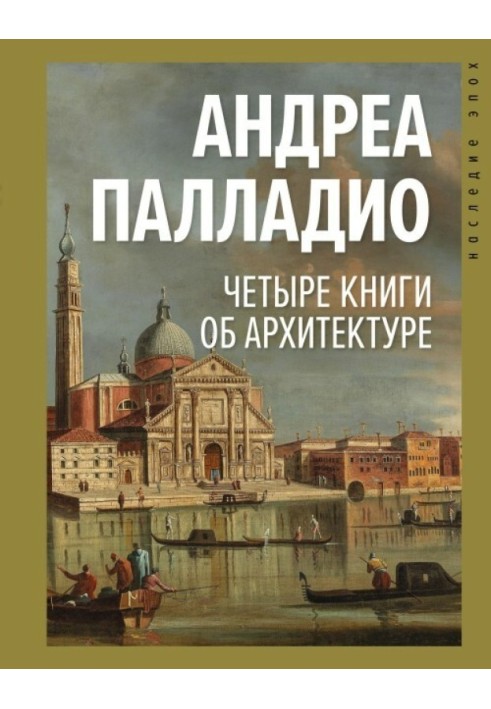Four books about architecture
 Instant download
Instant download
after payment (24/7)
 Wide range of formats
Wide range of formats
(for all gadgets)
 Full book
Full book
(including for Apple and Android)
Andrea Palladio (1508–1580) is one of the key figures of the Italian Renaissance, an architect, theorist and expert on ancient architecture. Having gone from an ordinary stonemason to an architect, he combined strong craft skills and high cultural aspirations of Northern Italian fans of ancient classics, into whose circle he was introduced by the humanists G. Trissino and D. Barbaro. The most famous are the Villa Almerico Capra La Rotonda, the Basilica Palladiana, the Teatro Olimpico, and the Cathedral of San Giorgio Maggiore in Venice, which he designed in Vicenza. Thanks to his students and followers, his creative principles and experience had a dramatic influence on the fate of world architecture. Palladianism is a special direction of European classicism of subsequent centuries, the basis for which was the treatise “Four Books on Architecture”, first published in Venice in 1570. Having undergone numerous reprints and translations into foreign languages, this classic work retains its significance today, serving not only as a literary document of the 16th century, but also as an example of high architectural culture. The publishing layout is preserved in PDF A4 format.
Data sheet
- Name of the Author
- Андреа Палладио
- Language
- Russian
- Translator
- Иван Владиславович Жолтовский
Reviews
Неперевершений класичний твір, що залишає слід у серцях архітекторів!
Книга "Чотири книги про архітектуру" Андреа Палладіо є справжнім шедевром, який не лише відображає естетику італійського Відродження, але й закладає основи для подальшого розвитку архітектурної думки. Палладіо, пройшовши шлях від простого каменяра до видатного архітектора, ділиться своїми знаннями та досвідом, що робить цю книгу безцінним ресурсом для всіх, хто цікавиться архітектурою. Його вілли, театри та церкви, описані в книзі, вражають своєю гармонією та елегантністю, а теоретичні основи, викладені в трактаті, залишаються актуальними і сьогодні. Читання цієї книги - це не лише можливість зануритися в історію архітектури, але й натхнення для сучасних архітекторів, які прагнуть створювати щось вічне та значуще. Рекомендую всім, хто цінує красу і мистецтво архітектури!













